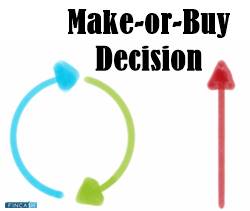
Decision Tree
What is a Decision Tree?
A decision tree is either a chart or a diagram that people use to comprehend an actionable course or to display statistical probabilities. It creates an outline with every branch of the decision tree displaying a possible reaction, outcome or decision.

And, the branches that have been placed farthest show the end result. Individuals may also use decision trees to elucidate and discover the answer to a complicated problem experienced in business, investment, and finance.
Explaining Decision Tree
A decision tree represents a decision, its outcome and the result of its outcome graphically. Individuals can deploy this tree in several situations, whether personal or professional. With a sequence of steps, decision trees provide an easy and effective way to visualize and comprehend the possibilities of a decision and its extensive possible results.
This tree also helps discover potential options and evaluate every action against the rewards and risks that it can yield. As from the perspective of an organization, a decision tree can be deployed as a type of decision support system.
Its structured model enables a reader of the chart to see how one choice is going to lead to the next, with the help of branches that indicate exclusive options. Furthermore, the structure of a decision tree helps users to take one problem and acquire multiple solutions to it.
Along with that, the person can also display these solutions in a seamless, easy-to-understand format that talk about the relationship between different decisions or events.
How to Build a Decision Tree?
To create a decision tree, you should begin with an individual decision that requires utmost attention. You can draw a square at the left of the eventual tree to represent the decision. And then, draw lines outward from that box; each line moving from left to right and representing an option.
Talk to our investment specialist
On the contrary, you can also draw a square on the top of the page and draw lines going downward. At the end of every option or line, you can evaluate the results. In case the result of an option is to take a new decision, you can draw another box at the end of that line and then draw a new line.
However, if any result is unclear, you can draw a circle at the line’s end, which would represent a potential risk. Once you have reached the endpoint of the decision tree, draw a triangle to finish it.
All efforts have been made to ensure the information provided here is accurate. However, no guarantees are made regarding correctness of data. Please verify with scheme information document before making any investment.







